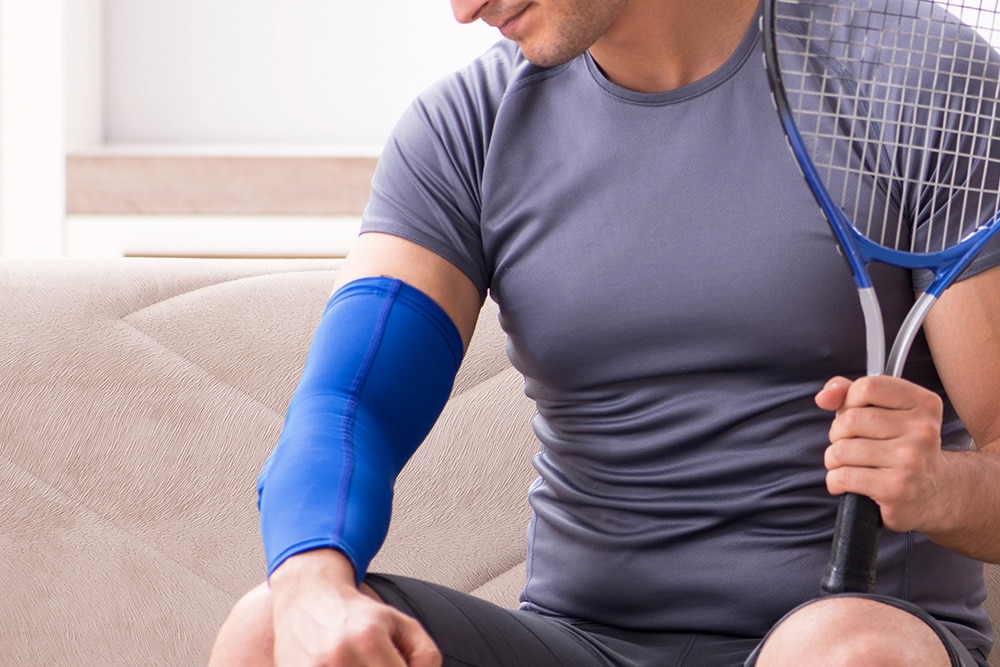Tennis elbow
Tennis elbow is painful condition characterised by inflammation of the outer elbow.
Tennis elbow
Tennis elbow is painful condition characterised by inflammation of the outer elbow.

What is tennis elbow?
Lateral epicondylitis, commonly known as tennis elbow, is a condition that occurs when repetitive movements and stress cause tendons in the elbow to swell. The condition often affects tennis players. Other professions prone to the condition include plumbers, carpenters, and painters. However, tennis elbow also affects people who do certain everyday activities such as using power tools, chopping food, or handling a computer mouse.
The most common symptoms of tennis elbow include pain and weakness in the elbow. This feeling can also spread to the forearm and wrist, and you might notice yourself struggling to hold or grip objects, or feel a painful, burning, or aching sensation around your elbow. The condition stems from strained muscles in the forearm, causing the outside of your elbow to tear and become inflamed.
With the right care plan, it is possible for many patients to make a full recovery from tennis elbow symptoms without surgery. Non-surgical treatment options include ice, elbow strapping, and anti-inflammatory pain medication. Your doctor may also recommend steroid injections to reduce swelling and pain. However, if the condition continues or worsens and these treatment options are insufficient for long-term pain management, surgery may be your best option. In this case, ultrasonic tenotomy – a surgical procedure which involves removing damaged tissue – may be a suitable option for long-term relief.
In most cases, you can expect to make a full recovery from tennis elbow symptoms without surgery. This is thanks to effective treatment options such as therapeutic tape and steroid injections. If your doctor does recommend surgery, the outlook is positive. Treatment outcomes for tennis elbow surgery have an 80-90% success rate, but these results also depend on your commitment to your doctor’s instructions regarding rest and physical therapy.
Whilst the majority of people who undergo elbow surgery do well and are very happy with their results, there are risks which are specific to elbow surgery in addition to the general risks of surgery. This includes deep infection, injury to the nerves tendons or blood vessels close to the surgical field which may require further surgery, stiffness or loss of motion, developing abnormal bone formation such as heterotopic ossification or myositis ossificans, ongoing pain, instability, fracture of the bones and abnormal pain responses such as Chronic Regional Pain Syndrome (CRPS).
Most of these risks are low and less than 5% but stiffness is not uncommon but usually resolves with time with physiotherapy. It is important to be aware of these risks before consenting to surgery. There are also risks relating to the specific type of elbow surgery that you are having, which Dr Cheriachan will discuss with you in detail during your consultation.
Preparing for your visit
Dr Cheriachan consults from Norwest on Wednesdays and Blacktown on Mondays and Thursdays.
Your first visit will be used to carefully assess your condition as well as gathering all related health information. It is important that you bring all relevant documents including scans and x-rays. We also ask that you wear clothing that allows freedom of movement as your visit will include a physical examination.